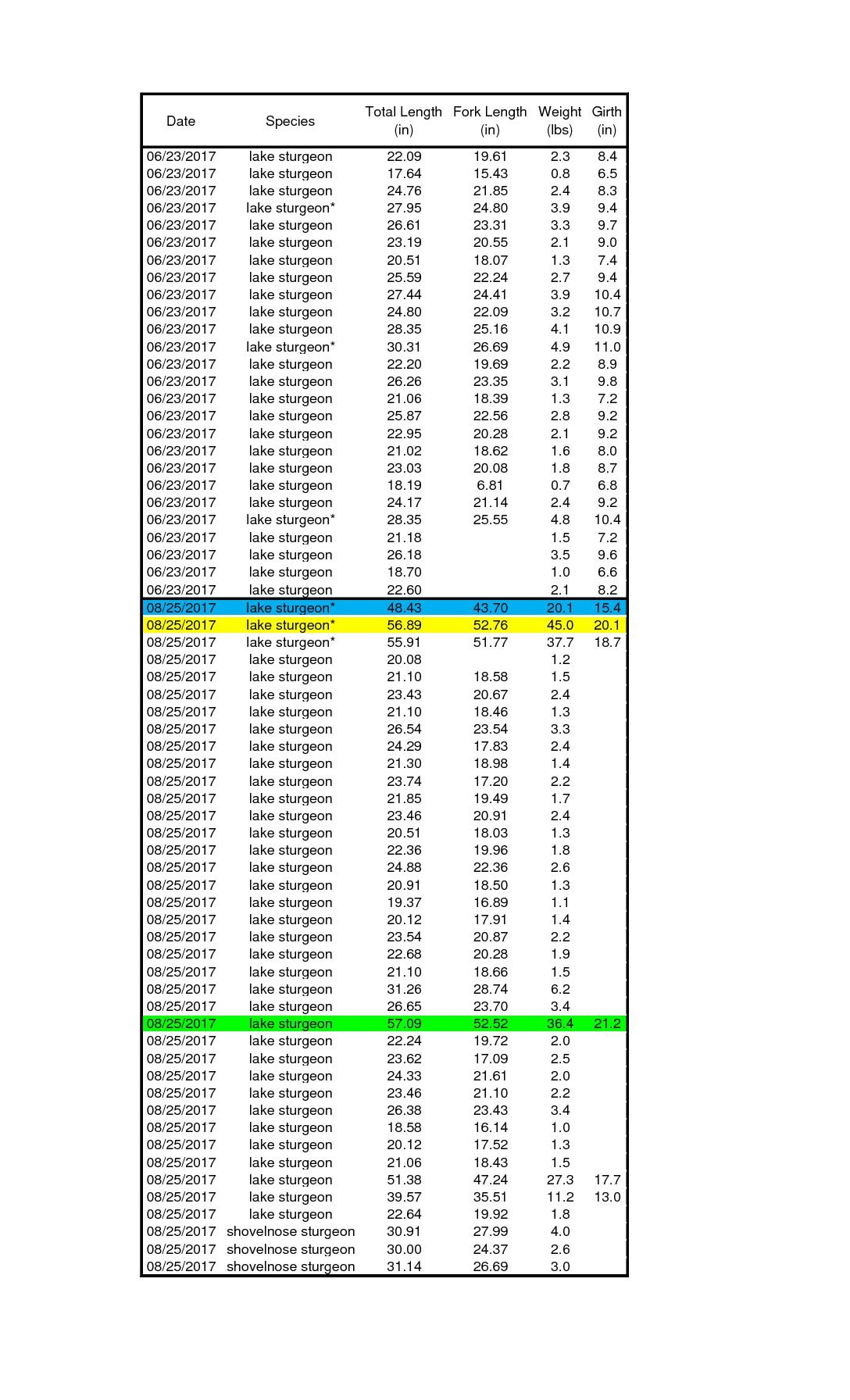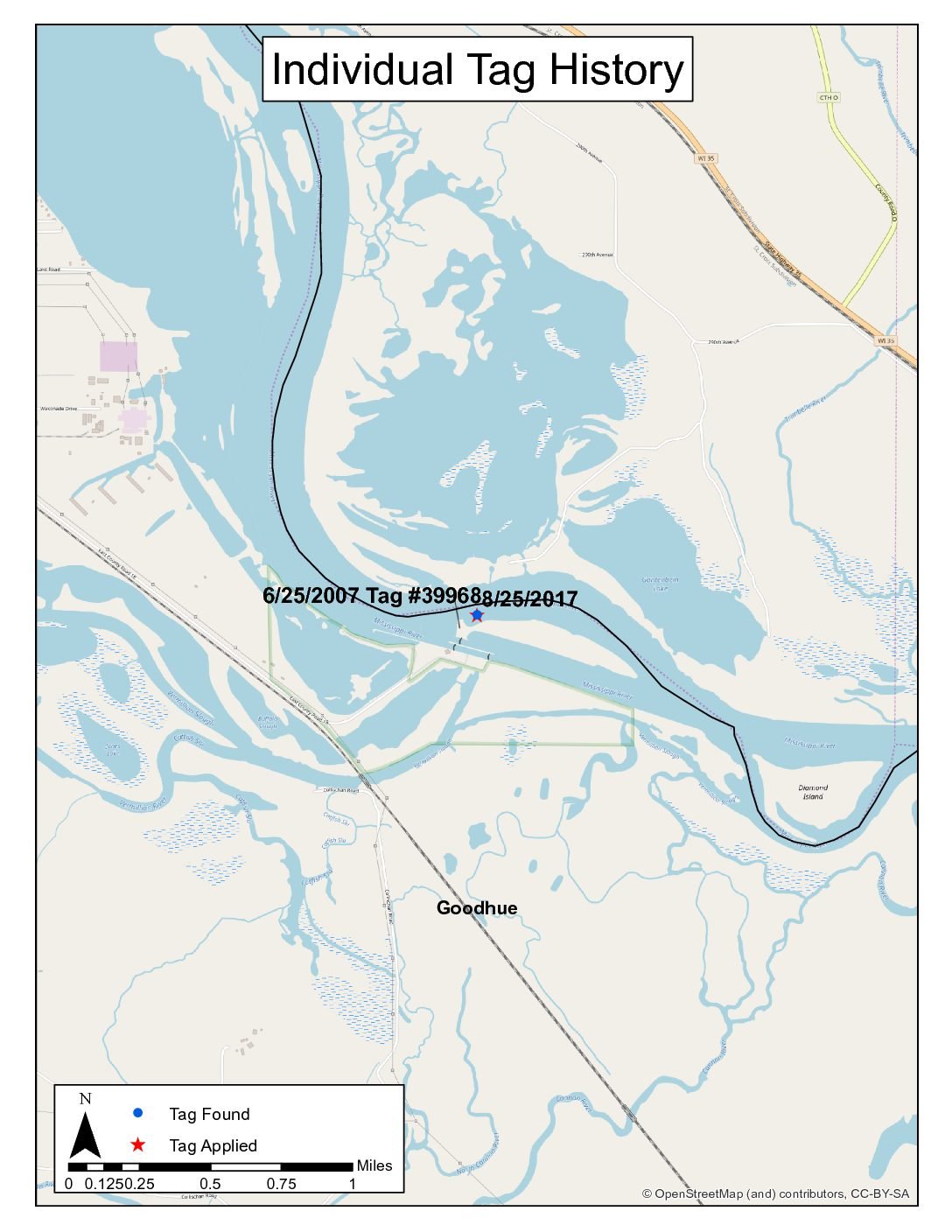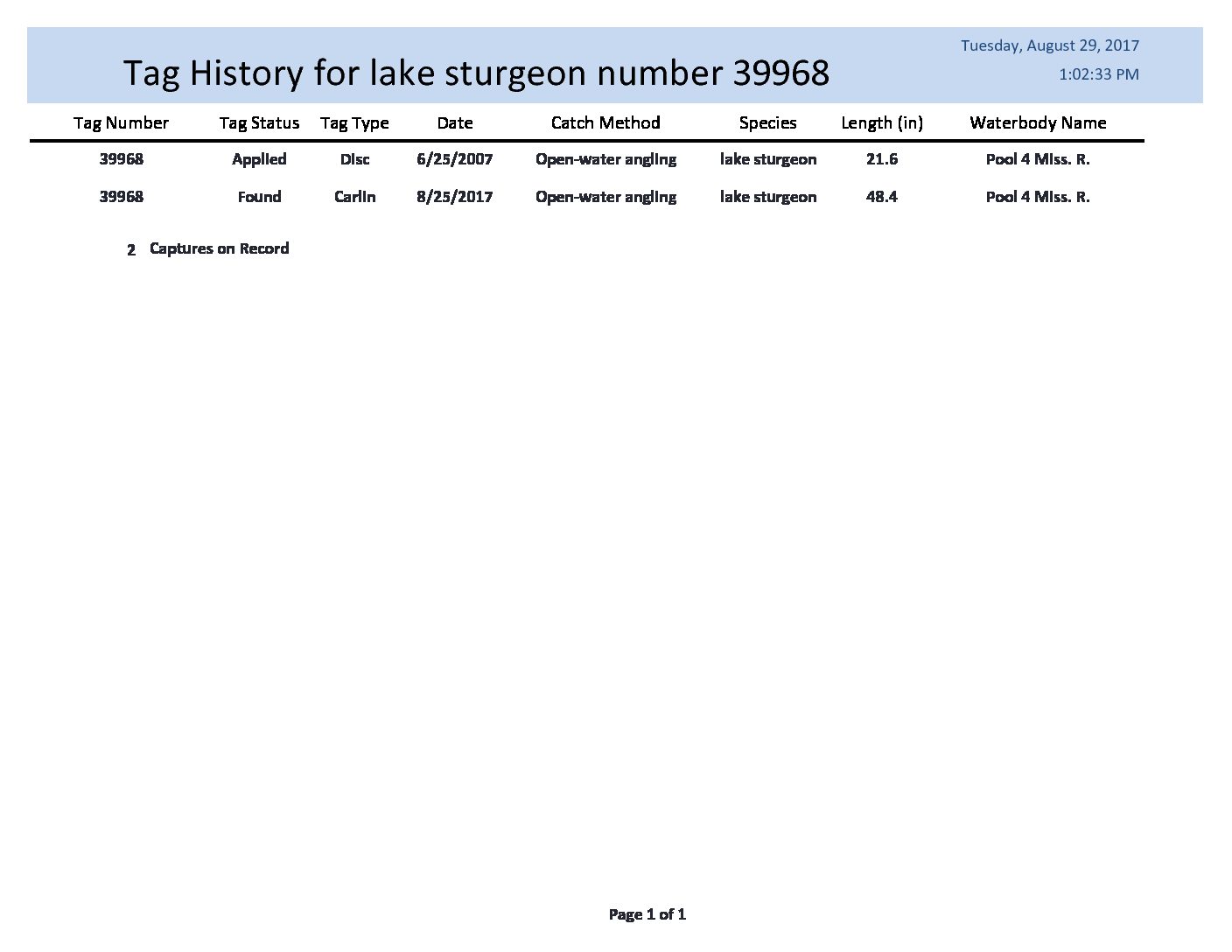First of all thanks again to all the anglers who came out to help us tag some more Lake Sturgeon last Friday night at Lock and Dam 3. The results of both evenings of tagging (minus the aging data that has not been completed yet) are attached in a PDF table. The heaviest fish is highlighted in yellow, the longest in green, and the blue highlight is marking a fish that was caught with a dangler tag we had installed in 2007 (see tag return info shared with the angler by email below and 2 additional PDF attachments). The fish marked with an asterisk were also surgically implanted with acoustic transmitters to allow us to assess their movements over the next 10 years.
We were able to get all of the acoustic transmitters we wanted to place in the tailwaters implanted. We saved a single acoustic tag back in case we encounter a monster sturgeon while getting our remaining Paddlefish tags implanted.
Thanks again for the help and feel free to contact me if you have any questions.
Nick
(Tag return e-mail text below)
Your tagged Lake Sturgeon from last week provides us with an interesting opportunity to compare tagging methods.
It was originally tagged on 6/25/2007 and was the 5th and last Lake Sturgeon tagged out of the Lake City office on our first ever day of sturgeon tagging for this office.
We take 4 measurements from most sturgeon we tag now (total length, fork length (the distance from the tip of the nose to the inside curve of the tail), girth, and weight.
Fork length is used primarily to minimize the effect that a tail amputation or erosion can have on fish over time. I find this less of an issue with lake sturgeon, but Shovelnose Sturgeon very often lose the thin whippy tip on the top half of their tail which can change their total length by several inches. In Paddlefish we actually use a measure called eye-fork length (you guessed it the distance from the eye to the fork of the tail) for similar reasons. In that case loss or partial amputation of the rostrum or paddle is often caused by prop strikes or encounters with turbines in hydro dams and can change total length by a significant percentage.
Back to your fish Tag # 39968. In its case we were new to Lake Sturgeon tagging so only a fork length was taken 483 mm or roughly 19 inches. After the fact a length regression was used to calculate a probable total length (a value that was needed for the database to function) for our database. This value was 21.6 inches and was what you will see on the attached tag return history. Based on some of our early Lake Sturgeon aging work that was done that same summer in 2007 your fish was likely Age-3 or Age4 when tagged which would make it Age-13 or Age-14 now when you recaptured it on Friday at 48.4 inches total length, 43.7 inches fork length, 15.4 inches in girth, and weighing 20.1 pounds. The link below will connect you to a Length-Girth-Weight Relationship document developed by the Baudette Area Fisheries Office to help anglers estimate weights of their catch using easily obtainable lengths. If you look for your fish on the weight relationship you will note that the predicted weight is off by only about a pound, but the predicted age for a 45” Lake Sturgeon in the Rainy River system is 19 years. This would imply that the growth of Lake Sturgeon in the Mississippi River is faster than our more northern systems. This would not be a surprise, but is something we hope to verify by recapturing some of our smaller tagged fish that we are currently aging later in their lives with known growth over a known period of time.
http://files.dnr.state.mn.us/areas/fisheries/baudette/lksweight.pdf
The attached map shows that your fish was captured in almost exactly the same place in 2007 as it was last Friday.
This is where your fish has the opportunity provide us with more information on the two tagging methods. Based only on the Carlin disc dangler tag applied in 2007 and found in 2017 the assumption would be that the fish may have spent all its time in the tailwaters of LD3. The newly implanted acoustic tag will provide movement data for ~10 years by sending a “ping” every 3 minutes which will be recorded by any listing station in range. We have these stations spaced around Pool 4, the East Metro fisheries office has many receivers in the upper pools of the Mississippi, in the Saint Croix, and in the Minnesota River. Additionally the US Fish & Wildlife service and various other state agencies and educational institutions maintain a network of receivers that runs from Pool 5A down to Illinois and Missouri with sporadic coverage beyond that to the mouth of the Mississippi River in Louisiana.
One of our goals with tagging fish in the tailwater is to determine if the fish found there are functioning as a separate population from the rest of the pool. The data from the dangler tag on your fish would support this hypothesis or at the very least do nothing to disprove it. The acoustic tag we implanted should quickly verify that your fish is staying in the tailwater area or prove that it is a mobile fish and only a coincidence that it was captured in the same location twice. A second goal of the tagging is to test the hypothesis that the tailwater areas may be used as nursery habitat for younger lake sturgeon.
The smaller fish we implanted with acoustic transmitters during the June tagging event will allow us to test this hypothesis right away based on their behavior, and if the tailwater is functioning as a nursery we should see them transition after several years of living in the tailwaters to more free movement throughout the system as they grow and become sexually mature.


